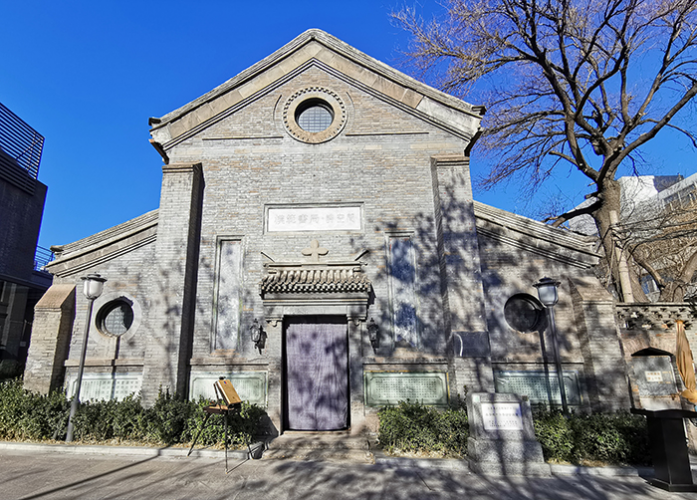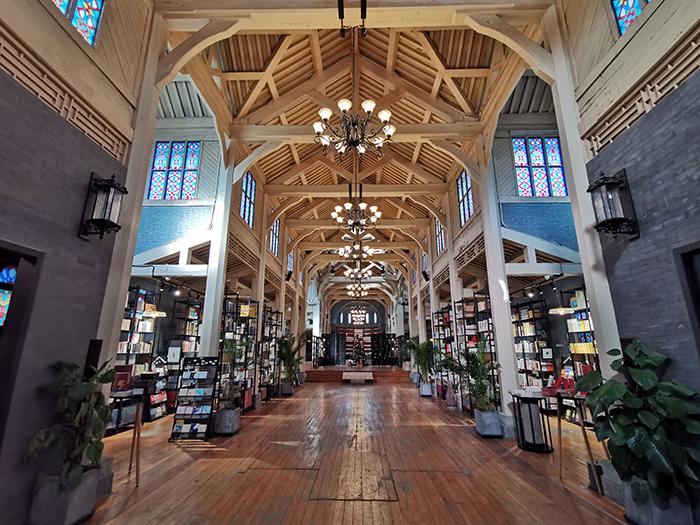Xuanwumen Church, Xishiku Church, and Chongwenmen Church are all key protected cultural relics in Beijing. Among these historic churches, there is one that has not been used for worship but has been converted into a bookstore. This is the Holy Saviour's Cathedral.
As early as 1862, English Anglican missionary John Shaw Burdon came to Beijing to expand the church work. He established a church near the British Embassy to meet the spiritual needs of the community. Not long after, upon the recommendation of Thomas Francis Wade, Burdon began working at the Tongwen Guan (or the School of Combined Learning), a government institute for teaching Western languages, where he served as the head instructor, training Chinese diplomats proficient in English.
The development of the Anglican Church in northern China began with the arrival of Charles Perry Scott. Born in 1847 in Yorkshire, England, C. P. Scott entered Charterhouse School at the age of ten, where he became a devout Christian and resolved to become a missionary overseas. At the age of 27, he was sent to China by the Anglican Church.
Scott was primarily active in northern China, leaving his mark in places like Zhili, Shandong, Henan, and Shanxi. As the number of believers increased, in 1880, he became the first bishop of the Anglican Diocese of North China, overseeing church affairs in the region.
In 1907, Scott acquired a piece of land on Tonglinge Road, which was originally the private residence of Yin Keting, an official from the Qing government's Ministry of Justice. Through diverse means, he purchased the land and built a church there. In 1912, the church was registered with the Beiyang Government, making it the property of the Anglican Church. From then on, it became the center of the Anglican Church in northern China, with two subsequent bishops, Francis Lushington Norris and Thomas Arnold Scott, managing church affairs and pastoring believers here until the early 1950s.
The Holy Saviour's Cathedral in Beijing is a blend of Chinese and Western architectural styles, with a floor area of approximately 640 square meters. The entrance of the church is located on the south façade, featuring a traditional Chinese gate design. Plaques are engraved on both sides and above, with the right inscription reading "This is the true Lord's house," the left "This is the gate of Heaven," and the horizontal inscription " "Respectable and Awesome."
The church is a rectangular building with a north-south orientation, featuring a double Latin cross layout, which is a basilica architecture. However, at the intersection of the main axis and the two east-west wings, there are Chinese-style octagonal pavilions that serve as the church's bell tower and skylight. The use of gray bricks and tiles commonly found in northern China further imbues the church with features of Chinese architecture.
Records describe the church's interior as follows: "The internal structure of the church is supported by wooden pillars and trusses that bear the roof load, with wooden flooring laid. Set at the crossing of the church, the altar made of wood is surrounded by redwood railings carved with floral decorations. A Chinese-style ice-patterned lattice screen is installed behind the communion table, and the furnishings of the altar are traditional Chinese redwood furniture."
With the Chinese churches entering a post-denominational era, combined with the "United Worship" movement of the late 1950s, the Holy Saviour's Cathedral ceased holding worship services. In the mid-to-late 20th century, it became the office of a certain enterprise. Due to its long history and unique architectural style, it was listed by the State Council of PRC as one of the seventh batch of National Key Cultural Relics Protection Units on March 5, 2013.
Today, the cathedral is home to a branch of Beijing's Mofan Bookstore. Because of its beautiful architecture, the bookstore has become an internet-famous spot, a must-visit destination for many tourists in Beijing, earning it the title of "the most beautiful bookstore."
(Originally published by the Gospel Times, the article has been edited under permission with the author being a Christian living in Xiamen.)
- Translated by Abigail Wu













